The C Major Chord should be the first chord that any piano player or musician should learn. This chord will be the foundation that helps you to learn all other chords.
Once you learn the C chord, you can begin to use it to help you learn other chords that are built using the same basic structure.
Learning this chord will help you understand how other chords are variations of the major chord. All chords, in some way, start with the major chord. Once you learn the C chord, you can start to build other chords quickly and easily.
The C Major Chord
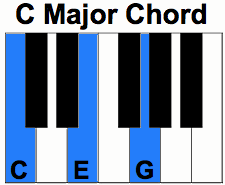
The C chord is the standard major chord that everyone must know. It starts on the root note of C, and contains the notes E and G. These three notes are combined to make the major chord.Most piano instructors will use this as the first chord to teach their students. This is because the chord is built off of Middle C.Middle C is usually the first note that beginner students learn.
Quick Tip!
The notes in the C Chord are C, E, G
How to Build a C Chord
There are two primary ways to build a chord; the number system, and using intervals. Once you learn each of these methods, you can use them to build any other major chord.
Number System
The number system labels each of the notes in the scale with a number.
The notes in the C major scale are: C, D, E, F, G, A, B.
Because there are seven notes in this scale, each note will be given a number, starting with C.
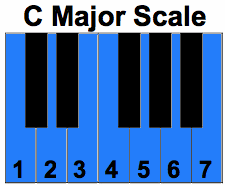
C would be 1, D is 2, E is 3, and so on.
With each note numbered, you can now follow the pattern for all major chords.
All major chords use the 1, 3, and 5 notes in the scale. That tells us that the notes that are going to be used in the C chord will be C, E, and G.
This pattern can be used to form any major chord.
Quick Tip!
Major Chords are built using 1, 3, and 5
Intervals
Intervals are used all throughout music. They show the distance between one notes. They are also used when building chords and chord progressions.
A major chord will always starts on the root note of the chord. For the C major chord it will start on a C note. From the root note, you move up amajor third. A major third consists of two half steps.
On top of the major third, you move up a minor third. A minor third is made up of three half steps.
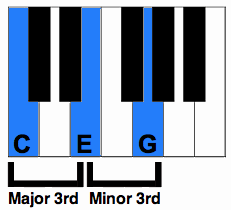
To build a C major chord using intervals, you build a major third on top of a minor third.
Fingering and Inversions
Root Position
The root position for this chord starts on middle C. Play the C with your thumb. Add the E note with your middle finger. Finish the chord by playing G with your fifth finger.
First Inversion
Rather than starting on the C like in the root position, the first inversion starts by playing an E with the thumb. Play a G with your second finger, and add the C on top with your fifth finger.Second Inversion
The fingering for the second inversion is the same as the root position except the notes are different. It starts on a G with the thumb, then adds a C with the third finger. It then ends with an E on top with the fifth finger.
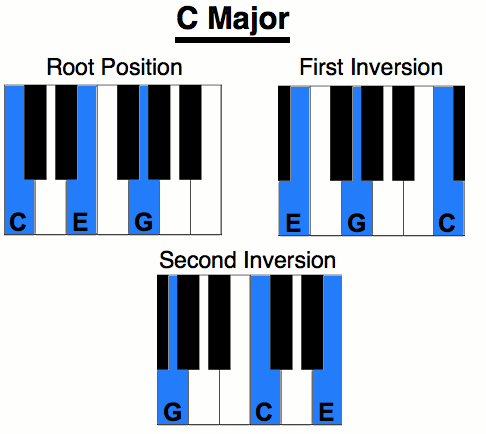
C Major on Sheet Music
The C chord starts on the ledger line below the low E line on the musical staff. Take a look at the image to see the three inversions of the C major chord.
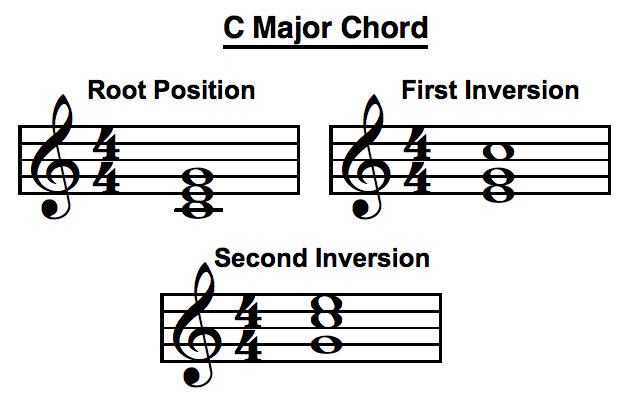
The C major chord is one of the most used chords by beginner musicians. It is easy to learn and play. Once you learn this chord you can begin to use it in a lot of different songs. Once you learn the C chord, you should next move on to the G Major Chord. This is another major chord that will be played in the C Major Scale.
Need more help learning chords? Learn almost every chord you’ll ever need with our Piano Chord Encyclopedia.
Go From C Major Chord Back to Piano Chords
Back to Home Page

